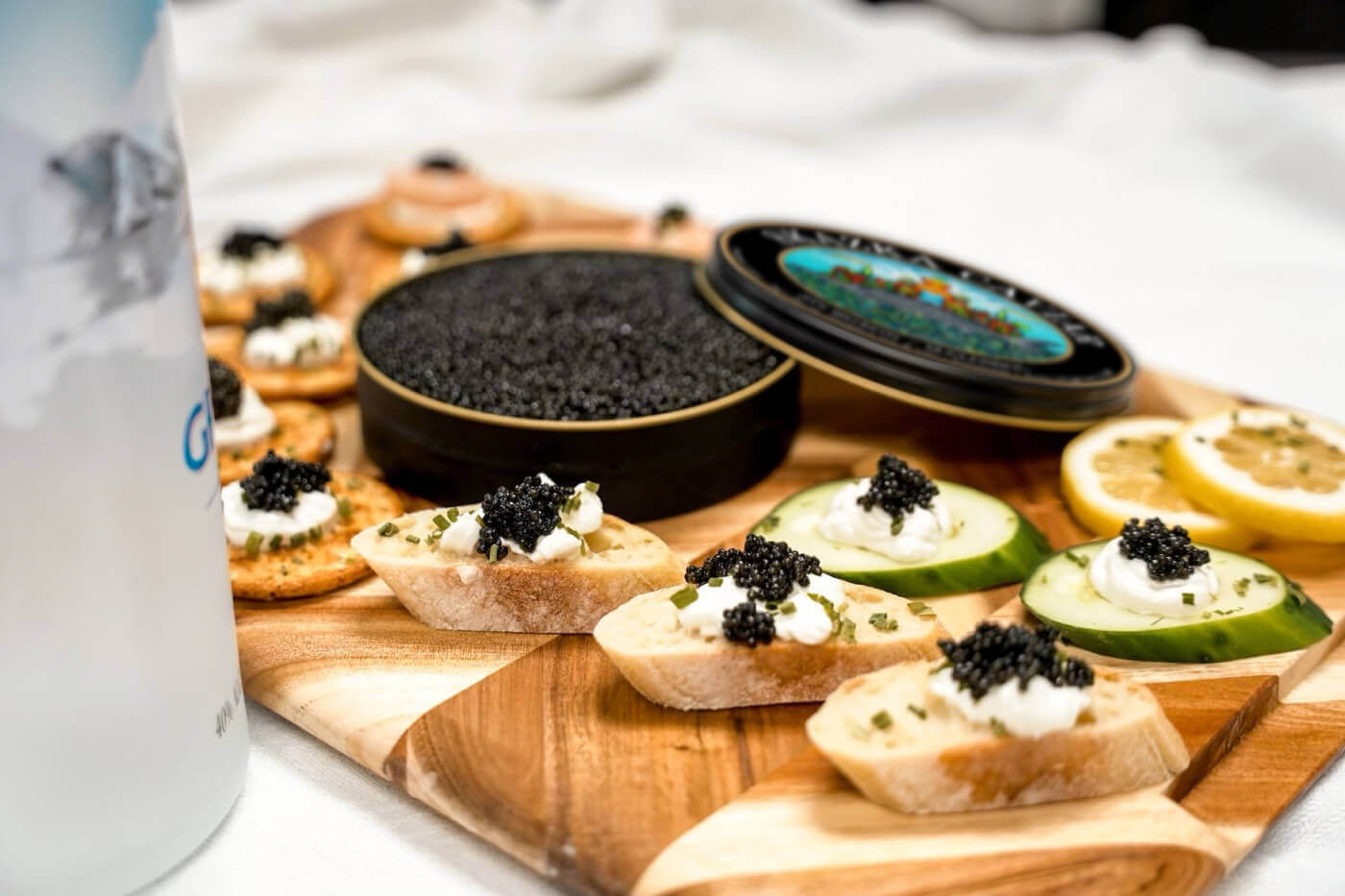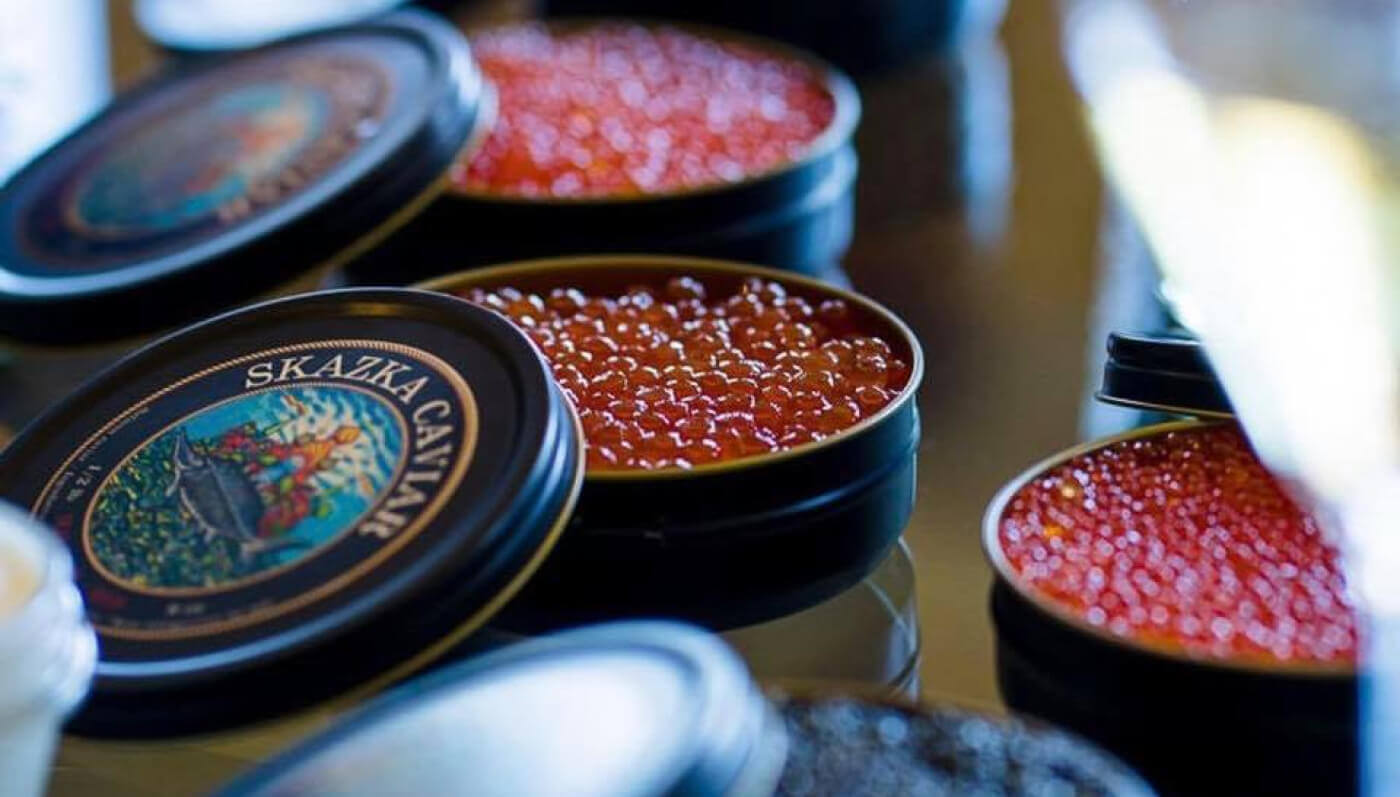The Luxurious History of Caviar: From Ancient Delicacy to Global Luxury
Caviar, the delicacy made from salt-cured sturgeon roe, has long been synonymous with luxury, indulgence, and refined taste. This prized delicacy, which originated in ancient times, has traveled through various empires, from the tables of Persian kings to the haute cuisine of contemporary society. The transformation of caviar from a regional specialty to a global luxury commodity is a fascinating journey influenced by historical, social, and economic factors.
In this blog, we will explore the history of caviar, its cultural significance, and the evolution of the caviar market. Additionally, we will examine the environmental challenges posed by overfishing and how modern practices are shaping the future of caviar production. Our analysis will draw on historical records, economic data, and conservation initiatives to present a comprehensive picture of caviar’s past, present, and future.

I. The Origins of Caviar: A Food for Kings
A. Ancient Persia: The Birthplace of Caviar
- Persia’s Royal Delicacy
The word “caviar” is believed to have its roots in the Persian word khav-yar, meaning “cake of strength.” Ancient Persian kings were among the first to appreciate sturgeon roe for its nutritional and supposed medicinal properties. The Caspian Sea, a region renowned for its abundance of sturgeon, was the birthplace of caviar production, and the fish roe was considered a royal delicacy.
Persians believed caviar had healing properties, particularly for strength and vitality. Ancient texts also suggest that caviar was consumed by warriors before battles to boost their stamina. Over time, it became a prized food at royal banquets, and its consumption was closely associated with wealth and power.
- Caspian Sea and Early Trade Routes
The Caspian Sea, shared by modern-day Iran, Russia, Kazakhstan, and Azerbaijan, has long been home to various species of sturgeon, including the famed Beluga, Sevruga, and Ossetra varieties. As trade routes expanded, particularly through the Silk Road, Persian merchants began exporting caviar to neighboring regions, spreading its reputation as a luxury food.
II. Caviar in Europe: The Delicacy of Aristocrats
A. Russian Influence: The Golden Age of Caviar
- The Tsars and Russian Nobility
While caviar’s early origins lie in Persia, it was the Russian aristocracy that truly elevated the delicacy to new heights. By the 13th century, Russian tsars were avid consumers of caviar, and it quickly became a staple at royal feasts. The Volga River, which flows into the Caspian Sea, was abundant with sturgeon, and Russian fishermen mastered the art of harvesting and curing the roe.
During the reign of Peter the Great, Russia began exporting caviar to Europe, where it became a symbol of wealth and opulence. Russian nobility also pioneered the practice of pairing caviar with vodka, a tradition that remains popular to this day.
- Russian Orthodox Church and Caviar
Caviar’s rise in Russia was also linked to religious customs. During the fasting periods of the Russian Orthodox Church, meat and dairy were prohibited, but fish products were allowed. As a result, caviar became a popular substitute for meat among the Russian aristocracy during Lent. This religious significance helped solidify caviar’s place in Russian culinary culture.
B. Caviar’s Spread to Western Europe
- Caviar in France and the United Kingdom
In the 19th century, caviar made its way to Western Europe, particularly France and the United Kingdom. Russian exports of caviar, combined with the growing popularity of sturgeon fishing along the rivers of France, made caviar a sought-after delicacy at the finest dining establishments. French chefs began incorporating caviar into elaborate dishes, solidifying its status as a symbol of haute cuisine.
- Caviar and French Gastronomy: French chefs, particularly those influenced by Russian nobility, began pairing caviar with buttered toast and blinis, creating simple yet elegant dishes that showcased the flavor of the roe. The marriage of French culinary techniques and Russian caviar cemented the delicacy’s place on the menus of elite restaurants across Europe.
- Caviar in the United States: A Boom and Decline
By the late 19th century, caviar had also reached the United States. American rivers such as the Delaware and Hudson were home to large sturgeon populations, and caviar production flourished. However, in a stark contrast to its current luxury status, American caviar was initially sold cheaply, often given away in bars as a salty accompaniment to beer.
- Decline in American Sturgeon Population: By the early 20th century, overfishing led to the near extinction of sturgeon in American rivers. As the supply dwindled, caviar’s price began to rise, transforming it from a common food to a luxury item once again.
III. The Modern Era: Globalization and Market Forces
A. The Rise of International Caviar Markets
- Post-Revolution Russia and Caviar Trade
Following the Russian Revolution in 1917, caviar production became nationalized under Soviet control. The USSR became the dominant exporter of caviar throughout the 20th century, and Russian caviar solidified its reputation as the finest in the world. The global elite, from European aristocrats to Hollywood celebrities, developed a taste for the delicacy, driving up its value.
- Cold War and Caviar Exports: During the Cold War, caviar became a diplomatic tool, often gifted by Soviet leaders to Western dignitaries. This further enhanced caviar’s image as an exclusive luxury product reserved for high society.
- Caviar in the Middle East and Asia
The Middle East, particularly Iran, has also been a major player in the caviar industry. Iranian caviar, sourced from the southern shores of the Caspian Sea, rivaled Russian caviar in quality. By the late 20th century, Iran became one of the world’s largest producers of caviar, exporting it to markets in Europe, North America, and Asia.
In recent years, China has emerged as a significant player in the global caviar market. Chinese caviar farms, particularly those producing Kaluga and Amur sturgeon, have made significant strides in quality, offering a more affordable alternative to traditional Caspian caviar.
B. Caviar Auctions and Economic Value
- Global Auctions and Pricing Trends
Caviar’s rarity and high demand have led to its role as a luxury investment commodity. International auctions for rare varieties, particularly Beluga caviar, can fetch prices upwards of $10,000 per kilogram. The annual global caviar market is estimated to be worth over $500 million, driven by demand in Europe, North America, and Asia.
- Gastronomic Tourism and Caviar Tastings
Caviar has also become an integral part of gastronomic tourism, with high-end restaurants and luxury resorts offering exclusive caviar tastings. Culinary festivals, such as the annual Caviar Festival in Switzerland, have capitalized on the global appeal of the delicacy, attracting gourmands from around the world.
IV. Environmental and Conservation Challenges
A. The Impact of Overfishing on Sturgeon Populations
- The Threat to Wild Sturgeon
By the late 20th century, wild sturgeon populations in the Caspian Sea and other traditional caviar-producing regions had plummeted due to overfishing, habitat destruction, and pollution. Beluga sturgeon, the most prized species, was particularly hard-hit, leading to its classification as critically endangered by the International Union for Conservation of Nature (IUCN).
- Illegal Poaching and Black Market Caviar
The decline in sturgeon populations has fueled a lucrative black market for illegal caviar. Poaching in the Caspian and Black Seas remains a serious issue, with illegal fishing operations often outpacing legal harvests. The high price of black market caviar has exacerbated the problem, further threatening sturgeon species.
B. Caviar Aquaculture: A Sustainable Future?
- The Rise of Farmed Caviar
In response to the environmental crisis, caviar farming has emerged as a sustainable alternative to wild harvests. Aquaculture operations in countries like France, Italy, China, and the United States now produce a significant portion of the world’s caviar. These farms use controlled environments to breed sturgeon and harvest their eggs without depleting wild populations.
- Innovation in Caviar Farming: Innovations in aquaculture have led to the development of more efficient farming techniques, including the use of closed-loop water systems and advanced breeding technologies. These farms produce high-quality caviar while minimizing environmental impact.
- Economic Impact of Farmed Caviar
The shift towards farmed caviar has had a profound impact on the global market. While wild caviar remains highly prized, farmed caviar is more accessible and affordable, broadening the consumer base. The growth of the aquaculture industry has also created new economic opportunities, particularly in regions that have embraced sustainable fishing practices.
V. The Future of Caviar: Balancing Luxury with Conservation
As the global demand for caviar continues to rise, the industry faces significant challenges. Conservation efforts are crucial to preserving wild sturgeon populations, while the expansion of sustainable aquaculture offers a promising solution to meet market demand. Striking a balance between luxury and environmental responsibility will define the future of caviar production.
Efforts by governments and conservation organizations to regulate caviar harvesting, alongside the growth of certified sustainable caviar farms, offer hope for the future. As consumers become more aware of the environmental impact of their choices, the demand for ethically sourced caviar is likely to grow.
Conclusion: Caviar’s Enduring Legacy
From its origins in ancient Persia to its current status as a global luxury, caviar has maintained its place as one of the world’s most exclusive delicacies. Its journey through history reflects the cultural and economic forces that have shaped the modern culinary landscape. As the industry evolves, the future of caviar will depend on a delicate balance between maintaining its luxury appeal and promoting sustainable practices.
References
- National Geographic. (2020). “The Story Behind Caviar: History and Sustainable Farming.” Retrieved from National Geographic
- Food and Agriculture Organization of the United Nations (FAO). (2019). “Global Status of Sturgeon Fisheries.” Retrieved from FAO Website
- The Caviar Institute. (2021). “Caviar: A Global Luxury Industry and Its Environmental Impact.” Retrieved from Caviar Institute






